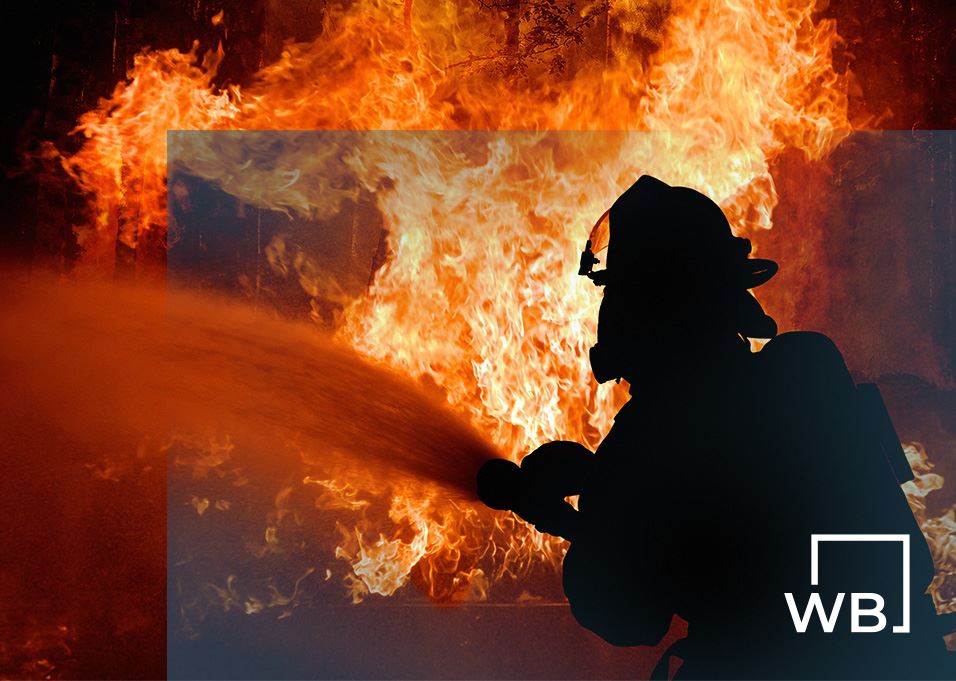
Boeing 737 MAX 8 Crash Lawsuits
Los Angeles Lawyers Fighting for Victims of Boeing 737 Crashes
The Boeing 737 MAX 8 is a new plane that had its first flight in January 2016. Despite its short time on the market, the MAX 8 has been involved in two tragedies in fewer than five months: the Ethiopian Airlines Flight 302 crash on March 10, 2019, and the Lion Air Flight JT 610 crash on Oct. 29, 2018. The 737 MAX 8 is a modified version of the 737 and is designed to be more fuel-efficient than previous models. Changes to the aircraft’s engine placement, however, resulted in engineers altering the angle of attack sensors and modifying the plane’s stall warning and recovery software. Pilots say they were not told about those changes and were not given training in the new system, putting lives at risk.
If you or a loved one became seriously injured in a Boeing 737 MAX 8 crash, our aviation attorneys at Wisner Baum can help you pursue compensation. Call (855) 948-5098 for a free consultation.
About MCAS: The Boeing MAX 8 Approval Process
To make the MAX 8 more fuel efficient, Boeing used larger engines, but to accommodate the larger engine size, the company altered where the engines are attached to the wings. Doing so, however, created a situation in which the plane tends to pitch upward, potentially causing a dangerous stall. To counter this, Boeing added an autopilot system that would push the nose down if angle-of-attack sensors indicated the nose was too high.
The 737 MAX has two angle of attack sensors but the plane’s anti-stall system relies on information from only one. If that sensor malfunctions, the system—known as the Maneuvering Characteristics Augmentation System or MCAS—would automatically push the plane’s nose down to prevent a stall. The problem is that pilots were not made aware of the new system in the aircraft and were not trained in using it or responding to emergencies if the system was unnecessarily triggered.
Pilots Unprepared for Changes to 737 MAX
When Boeing made changes to introduce the 737 MAX it convinced the Federal Aviation Administration (FAA) that pilots did not need to be told about the change or trained in understanding the new system, arguing that the new system was fundamentally similar to previous versions. This decision left the pilots woefully unprepared to determine what was going wrong and how to address it, and put the lives of the passengers and crew in jeopardy.
Furthermore, the FAA apparently either ignored or missed references to MCAS in the paperwork submitted when Boeing applied for approval. Boeing applied to have the 737 MAX approved under the 737 certificate. To do so, the aircraft maker had to show that the new plane was fundamentally similar to planes already covered under that certificate. The FAA reviewed the documentation provided by Boeing and developed a list of the ways in which the 737 MAX was similar to and different from previous 737s.
Nowhere on the FAA’s 30-page list does MCAS appear, even though it was completely new to the 737 MAX. The system is not named, nor is it described. The FAA also determined in other documents that a failure of MCAS would be hazardous, not catastrophic. This means there could be some loss of life if MCAS failed, but not a total loss of the plane and all lives on board. Even at a “hazardous” categorization, however, MCAS should have had redundancies built in rather than relying on a single angle-of-attack sensor. There was no way for MCAS to verify that the information it received from that single sensor was accurate.
That lack of redundancy is critical because in five years, at least 50 US commercial flights reported issues with the angle-of-attack sensors, meaning it is difficult to justify making emergency decisions based solely on one sensor. One analysis found that the FAA received reports of more than 200 issues with the angle-of-attack sensor from 2004 onward. In those cases, the angle-of-attack sensor either failed or required maintenance or replacement, including situations where the sensor froze, was not properly installed, or was struck by lightning.
Approximately one-fifth of the reports involved Boeing planes. It is likely Boeing knew about the potential for issues with the sensor, because the FAA sent instructions to the aircraft maker about some Boeing planes that used the sensor. Despite this, Boeing did not run a test flight to determine what would happen if the angle-of-attack sensor on the 737 MAX failed.
Finally, although Boeing described MCAS in its documentation, the version of MCAS that was installed on the planes was far more powerful than what the company described in its documents. The MCAS described in paperwork should only have moved the plane’s horizontal stabilizer 0.6 degrees at a time, but on the plane, MCAS actually moved the stabilizer up to 2.5 degrees. This made the plane much more difficult for the pilots to control.
Boeing 737 MAX 8 Crashes
Ethiopian Airlines Crash
On March 10, 2019, Ethiopian Airlines Flight 302, operating a Boeing 737 MAX 8, crashed approximately 6 minutes after taking off from Addis Ababa, Ethiopia, killing all 157 people onboard. Ethiopian Airlines Flight 302 reportedly had difficulty maintaining a stable climb. The pilot requested a return to the airport, but the Boeing 737 MAX 8 crashed approximately 39 miles southeast of the airport, killing all on board.
In early April, investigators released the preliminary report on the Ethiopian Airlines crash. The report noted that the pilots fought against the aircraft’s automated flight systems from moments after the plane took off. Although the pilots followed safety procedures, they could not regain control of the plane, and it crashed. Investigators noted that, shortly after the plane took off, the angle-of-attack sensor sent erroneous information to the MAX’s automated flight system, which activated the left stick shaker. The report states that the airspeed, altitude and flight director pitch bar values from the left side were lower than the right side values and remained lower until moments before the plane crashed.
Early reports suggested the plane suffered foreign object damage, which might have caused faulty angle of attack readings, but the preliminary report found no evidence that any object struck the plane. The MAX 8 plane was delivered to Ethiopian Airlines on Nov. 15, 2018 and had 1330.3 hours at the time it crashed. Meanwhile, investigators said the crew was fully qualified to fly the plane.
Lion Air Crash
On Oct. 29, 2018, Lion Air Flight JT 610 crashed approximately 13 minutes after taking off from Soekarno-Hatta International Airport in Jakarta. All 189 people onboard the plane died when it crashed into the Java Sea. Shortly after takeoff, the pilot requested to return to the airport due to “technical difficulties.” A preliminary report following the crash did not place blame for the tragedy but did note issues with the angle of attack sensor.
Reports also emerged that an off-duty pilot on a MAX 8 aircraft saved lives by accurately diagnosing the problem. One day before it crashed, the same Lion Air plane experienced the exact same issue with the anti-stall system. Fortunately for everyone onboard the plane, the off-duty pilot in the jump seat figured out what the problem was and told the crew how to resolve it. Unfortunately, none of the pilots aboard detailed to the airline exactly what they experienced and what they did to solve the emergency.
After the crew stopped power to the trim system’s motor, the flight carried on as normal. Indonesia’s safety committee reports the crew that managed to resolve their issue noted that the plane needed maintenance but did not specify issues with the anti-stall system.
The following day, the pilots for Ethiopian Flight 302, operating the same model 737 Max plane, experienced the same climb deviation and stall recovery system malfunction, but were unable to diagnose the problem even though they frantically looked in the operating handbook for guidance and found no help. The failure of the handbook to contain emergency procedures for the condition created by the MCAS system, and the lack of training given the pilots, is now being investigated as causes of the crash.
Reports from the cockpit recording indicate the captain asked the first officer to refer to the flight manual to determine what was going wrong with the plane. Sources who heard the recording said the pilots discussed airspeed and altitude but were not able to identify the cause of the plane’s issues.
Standard Safety Feature Not Fully Operational
There are two safety features linked to the MAX 737 angle of attack sensors; one standard on the aircraft and the other optional. Boeing recently admitted that its angle-of-attack disagree warning was intended to be standard on all planes but was not operational in every aircraft.
The angle-of-attack disagree light was developed to alert pilots when the two angle-of-attack sensors obtained conflicting data. If the two sensors did not agree, the light would come on and the pilots could determine where the issue lay and which sensor was accurate. Boeing apparently intended for that disagree light to be functional on every MAX 737 plane, but the light was mistakenly linked to the other warning, which was optional. As a result, the disagree light would only work if the airline opted and paid extra for the second warning, which not every airline did.
That second warning is the angle-of-attack indicator, which alerts pilots if one of the angle-of-attack sensors is not working properly. Armed with both warnings, pilots would know the sensors disagreed and would further know that one of the sensors was faulty, which would give them enough information to adjust accordingly.
That information might have stopped the Lion Air plane from even taking off as, according to reports, the Lion Air plane’s two angle-of-attack sensors disagreed by approximately 20 degrees while the plane taxied before takeoff. Had the crew known about that conflict while on the ground, they may well have chosen to abort the flight.
Boeing maintains that neither warning is necessary for the plane to fly safely, but authorities noted issues with the angle-of-attack sensors linked to flawed readings in both the Lion Air and the Ethiopian Airlines crashes. For pilots dealing with a malfunctioning plane, the more information available to them the better equipped they are to deal with an emergency situation.
Furthermore, some airlines say Boeing was not forthcoming with information about the disagree light not operating as promised. A spokesperson for Southwest Airlines said the company was told the disagree lights worked on all MAX aircraft and only learned that was not the case after the Lion Air crash.
“Upon delivery (prior to the Lion Air event), the AOA [angle-of-attack] disagree lights were depicted to us by Boeing as operable on all MAX aircraft, regardless of the selection of optional AOA Indicators on the Primary Flight Display (PFD),” Southwest wrote. The airline said it has installed the optional alert, making the disagree indicator operational. Boeing has since announced that, following software upgrades, all new 737 MAX planes will have activated disagree alerts and current 737 MAX aircraft will be able to activate the warning.
Boeing Admits Flight Control System was a Factor in Crashes
Boeing issued an apology for the crashes and admitted that the automated flight control system on the two 737 MAX aircraft likely played a role in the tragedies. Following the release of the Ethiopian Airlines preliminary report, Dennis Muilenburg, Boeing CEO, said, “…it’s apparent that in both flights the Maneuvering Characteristics Augmentation System, known as MCAS, activated in response to erroneous angle of attack information.”
At Wisner Baum, our attorneys can help clients with Boeing 737 MAX aircraft lawsuits anywhere in the country. Contact our Los Angeles offices today at (855) 948-5098 or submit our online contact form.

OVER $4 billion
in verdicts & Settlements
Our top priority is to devise customized legal strategies that are tailored to the unique legal needs of our clients, no matter how simple or complicated their situations, might be.
-
$2.0 Billion Verdict Personal Injury
In May of 2019, the jury in the case of Pilliod et al. v, Monsanto Company ordered the agrochemical giant to pay $2.055 billion in damages to the plaintiffs, Alva and Alberta Pilliod, a Bay Area couple in their 70s.
-
$289.2 Million Verdict Personal Injury
On Aug. 10, 2018, a San Francisco jury ordered Monsanto to pay $39.25 million in compensatory damages and $250 million in punitive damages to Mr. Johnson, a former groundskeeper who alleged exposure to Monsanto’s herbicides caused him to develop terminal non-Hodgkin lymphoma.
-
$265 Million Settlement Fatal Train Crash
In 2016, Wisner Baum attorney Timothy A. Loranger and six other attorneys in the Plaintiffs’ Management Committee were able to secure a $265 million settlement for victims of the 2015 Amtrak 188 derailment in Philadelphia, one of the largest in the U.S. for 2016.
-
$105 Million Settlement Pharmaceutical Settlement
Wisner Baum obtained $105 million on behalf of multiple clients involved in a pharmaceutical negligence case.
-
$80 Million Verdict Personal Injury
Wisner Baum attorneys served on the trial team in the case of Hardeman v. Monsanto Company, which resulted in an $80 million jury verdict for the plaintiff, Edwin Hardeman.

Our Case Results

-
$265 Million Settlement Fatal Train Crash
In 2016, Wisner Baum attorney Timothy A. Loranger and six other attorneys in the Plaintiffs’ Management Committee were able to secure a $265 million settlement for victims of the 2015 Amtrak 188 derailment in Philadelphia, one of the largest in the U.S. for 2016.
-
$14 Million Settlement A Major US Plane Crash
Wisner Baum obtained a $14 million settlement for the death of a passenger in a major US plane crash.
-
$12 Million Settlement Helicopter Crash
Wisner Baum secured a $12 million settlement for a passenger who was injured in a helicopter crash.
-
$10 Million Settlement A Major Foreign Plane Crash
Wisner Baum obtained a $10 million settlement for the death of a passenger in a major foreign plane crash.
-
$2.0 Billion Verdict Personal Injury
In May of 2019, the jury in the case of Pilliod et al. v, Monsanto Company ordered the agrochemical giant to pay $2.055 billion in damages to the plaintiffs, Alva and Alberta Pilliod, a Bay Area couple in their 70s.
-
$80 Million Verdict Personal Injury
Wisner Baum attorneys served on the trial team in the case of Hardeman v. Monsanto Company, which resulted in an $80 million jury verdict for the plaintiff, Edwin Hardeman.

Client-Focused Representation
REVIEWS & TESTIMONIALS
We believe our track record speaks for itself. But you don’t have to take our word for it. See what our clients have to say about working with us.
-
"I Can’t Imagine a Better Law Firm"
Multiple lawyers recommended Wisner Baum to me and I have been consistently impressed with the quality of their work.
- Best Law Firms Survey -
"They Are About Changing the Systems..."
Wisner Baum are not only amazing attorneys but more importantly, they are activists. They are about changing the systems which got us into trouble in the first place. They understand their role in the process of making change.
- Kim Witczak -
"Top Legal Minds in the Country"
The Wisner Baum firm has some of the top legal minds in the country; they are driven, determined, trustworthy, ethical and passionate.
- From Best Lawyers® Best Law Firms





